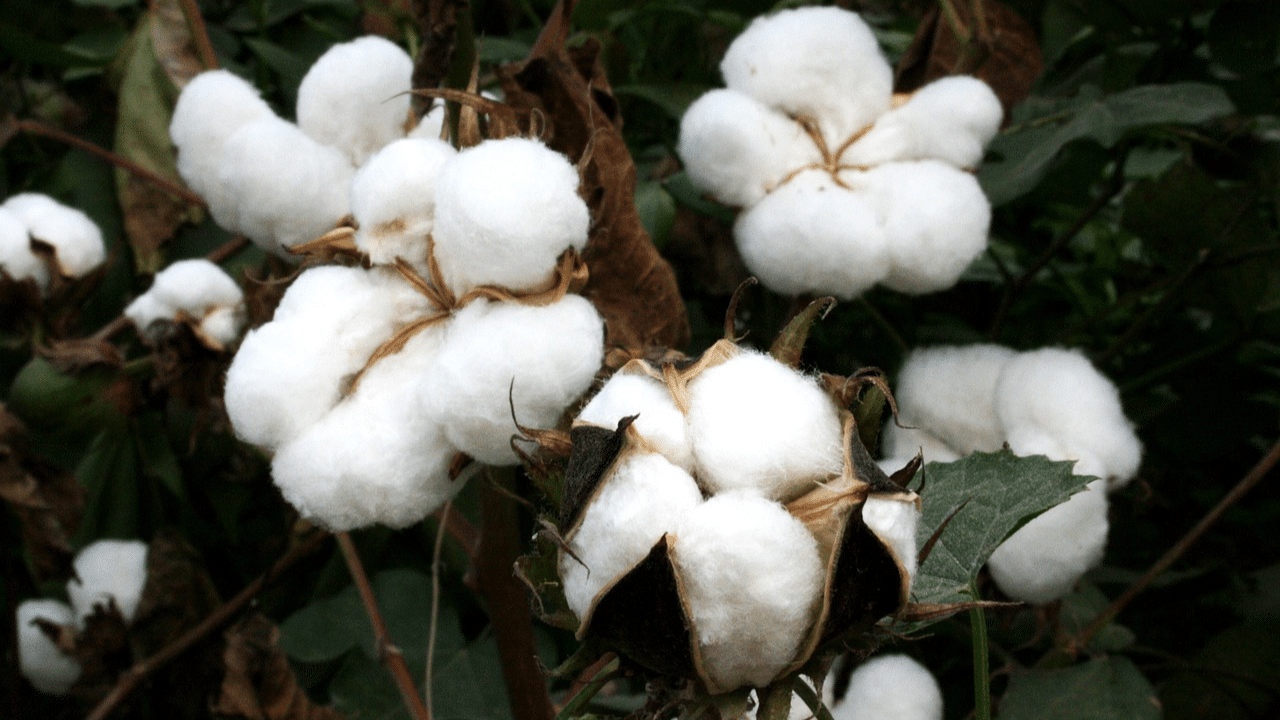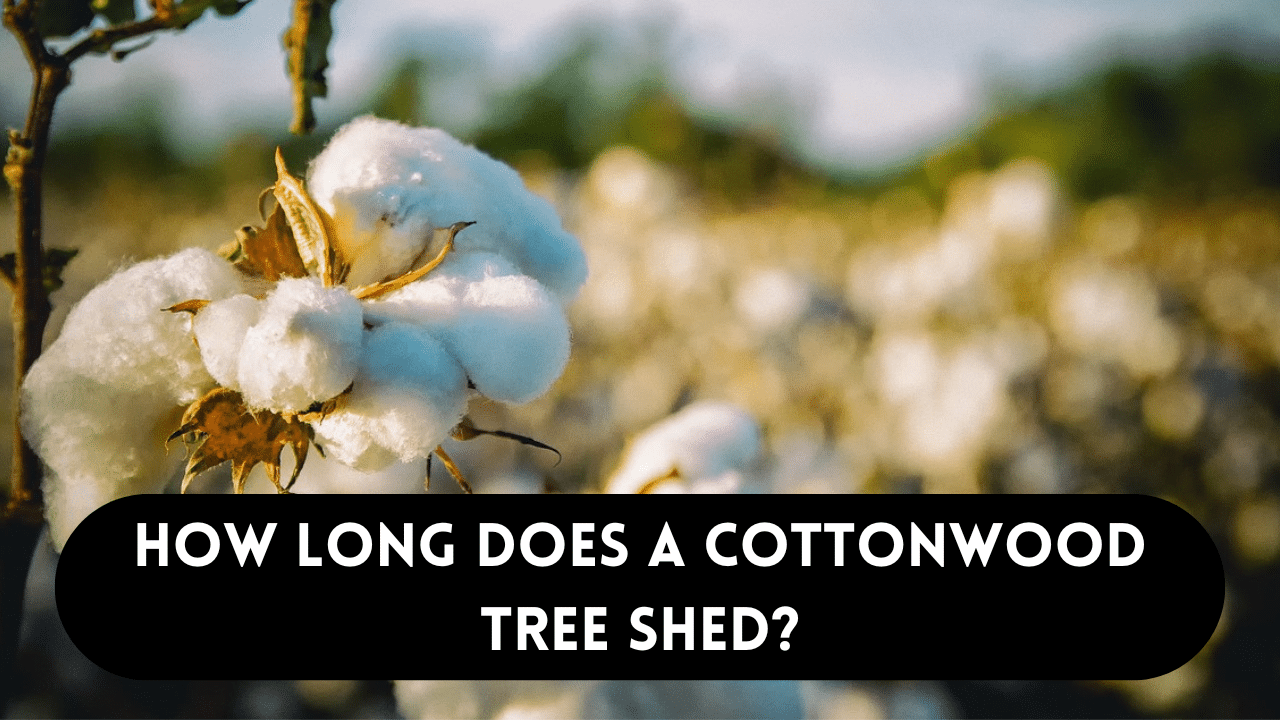Cottonwood trees have long captivated naturalists and homeowners alike with their imposing appearance and characteristic white fluffy branches. One of the most often asked questions is How long does a cottonwood tree shed?
Planning and upkeep of these trees may greatly benefit from an understanding of their shedding cycle. Let’s set out to investigate the shedding behaviors of cottonwood trees and learn more about their intriguing characteristics.
Knowledge of Cottonwood Trees
Members of the Populus genus, cottonwood trees are well known for their rapid growth to towering heights. These deciduous trees are found all throughout North America and do well in a range of settings, such as riverbanks and urban areas.
Their big, heart-shaped leaves and deeply grooved bark make them easy to identify.
The Cycle of Cottonwood Tree Shedding
Let’s now explore the cottonwood tree shedding cycle. Cottonwood tree shed usually after the first signs of fall. The cottonwood leaves change colour in a brilliant display as the days become shorter and the temperature drops, illuminating the surrounding area in shades of crimson and gold.
The Start of Cottonwood Tree Shedding
Cottonwood trees go through an amazing metamorphosis in the autumn. The leaves’ chlorophyll degrades, exposing the underlying pigments and producing an amazing rainbow of hues. The leaves change from green to yellow, orange, and crimson as the chlorophyll evaporates.
Arrival in Autumn: Cottonwood trees see dramatic changes as summer gives way to fall due to variations in temperature and daylight hours. The shedding cycle begins when the tree’s internal physiological processes are triggered by the waning of sunlight.
Change of Colour: The colour changes of cottonwood leaves are one of autumn’s most appealing features. The green pigment that predominates in leaves fades when chlorophyll production decreases, exposing vivid shades of yellow, orange, and red. Known as “autumn splendour,” this vibrant show is a seasonal highlight that leaves observers in awe.
Leaf Shedding: Cottonwood tree shed in anticipation of the winter’s dormant season, coinciding with the change in foliage colours.
The leaves progressively detach from their stems and float softly to the ground as they shed. This organic shedding shields the tree from the harsh winter weather and aids in resource conservation.
Timing and Length: The length of time that cottonwood trees shed their leaves varies based on a number of variables, including the climate, the surrounding environment, and the health of the tree. Generally speaking, the leaves may begin to fall several weeks early until mid-autumn and continue until the trees are completely barren.
Environmental Influences: The temperature, moisture content, and amount of sunshine a cottonwood tree receives can all have an impact on when and how much of its leaves shed.
While abrupt cold snaps or drought conditions might hasten the process, warmer temperatures and longer daylight hours may postpone it.
Significance: Cottonwood trees benefit from leaf loss in several ways in the autumn. It lessens the chance of harm from freezing conditions, aids with water and nutrient conservation throughout the dormant winter months, and gets the tree ready for new growth in the spring.
People can have a greater appreciation for the tenacity of these amazing trees and the seasonal cycles of nature by learning about the delicate process of cottonwood trees shedding their leaves in the autumn.
Seed Distribution of Cottonwood
In addition to losing their leaves, cottonwood trees are well-known for their fluffy seeds, which are essential for seed dissemination and reproduction. These seeds, which are sometimes called “cotton,” are protected by capsules that open in the spring.
Shed of Cottonwood Seeds
Cottonwood trees resurrect in the spring, signalling the approach of longer days and warmer weather. The cottonwood seeds lift off at this moment, propelled by the little breeze. The cotton seeds take off into the air like phantom snowflakes, travelling a great distance in search of a rich soil in which to germinate and sprout.

Environmental Elements that Affect Cottonwood Tree Shedding
Cottonwood tree shedding is influenced by various environmental conditions. Sufficient sunlight, soil moisture content, and temperature variations are essential for controlling the tree’s growth and shedding cycles. Denser foliage and longer periods of leaf loss are common in cottonwood trees found in areas with plenty of sunlight and water.
Upkeep Cottonwood Tree Shedding
It is crucial for homeowners and landscapers to comprehend cottonwood tree shedding patterns in order to maintain and design their spaces effectively. Particularly during times of severe shedding, regular trimming and removal of dead branches can encourage healthy development and reduce potential risks.
Accepting the Shedding of nature
The cottonwood tree shedding cycle serves as a reminder of the tenacity and splendour of the natural world. Cottonwood trees represent the cyclical rhythms of life and rebirth, from the striking hues of fall to the playful dance of cotton seeds in April. Therefore, remember the grandeur of nature’s ageless dance the next time you are in awe of a cottonwood tree shedding its leaves or releasing its fluffy seeds.
Through comprehending and valuing the shedding cycle’s complexities, we can establish a stronger bond with the natural world and enhance our existence by experiencing moments of inspiration and wonder.
As the seasons shift and the cottonwood trees shed their leaves for another year, let us celebrate the never-ending cycle of development, loss, and rebirth that characterizes life itself.
FAQs
How frequently do leaves fall from cottonwood trees?
Every year, during the autumn when the temperature drops and the amount of daylight diminishes, cottonwood trees lose their leaves. This shedding process is a normal response to seasonal changes and helps the tree store energy throughout the winter months.
When do seeds fall from cottonwood trees?
Depending on the type and the surroundings, cottonwood trees shed their seeds at different times. In spring or early summer, cottonwood trees frequently drop their seeds, which helps the trees spread and multiply in their natural environments.
Does the shedding of cottonwood trees have any advantages?
Indeed, ecosystems gain from cottonwood trees’ leaf and seed loss in a number of ways. It adds nutrients to the soil, encourages the growth of other plants, and gives wildlife habitats. Shedding also guarantees the survival of the species and aids in energy conservation for cottonwood trees.
Can I keep my yard from being shed by cottonwood trees?
Although shedding cannot be totally avoided, there are ways to lessen its effects. The annoyance of shedding in residential locations can be lessened with regular pruning, leaf collecting, and the careful planting of cottonwood types with decreased shedding tendencies.
Are cottonwood trees appropriate for cities?
Urban areas can support cottonwood trees, which offer habitat, shade, and other ecological advantages. However, some locals might find their shedding tendencies to be an annoyance. Achieving a balance between the advantages of cottonwood trees and the requirements of urban environments can be facilitated by careful planning and upkeep.
Conclusion
The cottonwood tree’s shedding cycle is an amazing occurrence that illustrates the delicate balance of the natural world. Cottonwood trees entice our senses with their brilliant fall colors and soft springtime fluff, serving as a constant reminder of the beauty found in each season.
We get a greater understanding of the cycles of nature and the interdependence of all living things when we accept the cottonwood tree shed behaviors.




